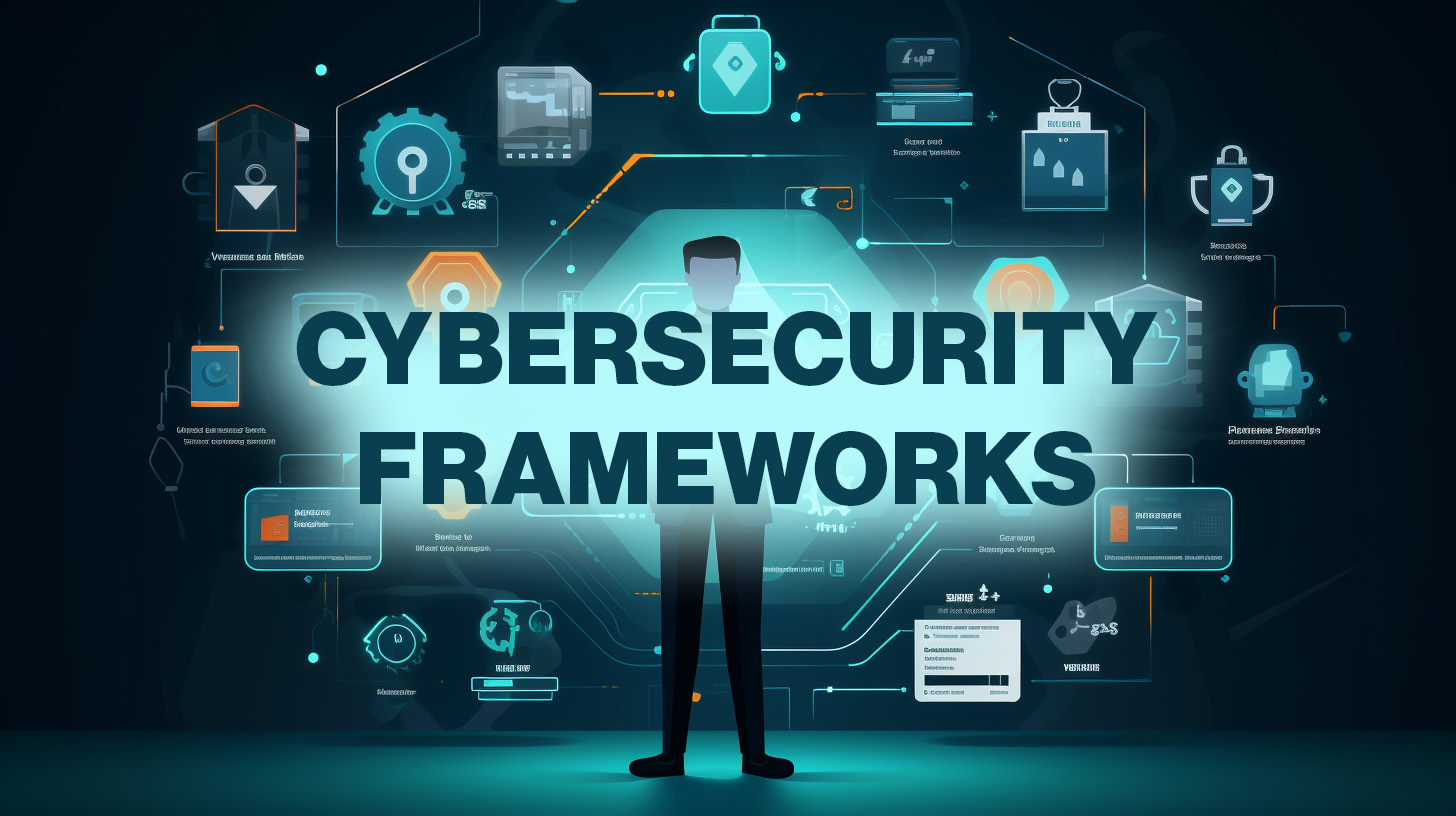Cybersecurity Framework: Building Resilient Security Measures

In an age where digital threats are constantly evolving and becoming more sophisticated, organizations must prioritize cybersecurity to protect their assets and sensitive information. A cybersecurity framework provides a structured approach to managing and mitigating cybersecurity risks, ensuring that organizations have robust security measures in place to defend against cyber threats. Let’s explore the concept of cybersecurity frameworks in detail and understand their significance in today’s digital landscape.
Definition of Cybersecurity Framework
A cybersecurity framework is a set of guidelines, best practices, and standards designed to help organizations manage and improve their cybersecurity posture. It provides a structured approach to identifying, protecting, detecting, responding to, and recovering from cyber threats and vulnerabilities.
Importance of Cybersecurity Frameworks
In today’s interconnected world, where data breaches and cyber attacks are on the rise, cybersecurity frameworks play a crucial role in helping organizations establish effective security controls, manage risks, and ensure the confidentiality, integrity, and availability of their information assets.
Purpose of Cybersecurity Frameworks
Establishing Security Controls
One of the primary purposes of cybersecurity frameworks is to establish security controls and measures to protect against cyber threats. These controls encompass a wide range of technical, administrative, and physical safeguards designed to safeguard sensitive information and mitigate security risks.
Risk Management
Cybersecurity frameworks also facilitate risk management by providing organizations with a structured approach to identifying, assessing, and prioritizing cybersecurity risks. By understanding their risk exposure, organizations can implement appropriate controls and mitigation strategies to reduce the likelihood and impact of cyber attacks.
Types of Cybersecurity Frameworks
NIST Cybersecurity Framework
The National Institute of Standards and Technology (NIST) Cybersecurity Framework is a widely recognized framework that provides a voluntary set of standards, guidelines, and best practices for managing cybersecurity risk. It consists of five core functions: Identify, Protect, Detect, Respond, and Recover.
ISO/IEC 27001
ISO/IEC 27001 is an international standard for information security management systems (ISMS) that provides a systematic approach to managing and protecting sensitive information. It outlines requirements for establishing, implementing, maintaining, and continuously improving an ISMS.
CIS Controls
The Center for Internet Security (CIS) Controls are a set of prioritized security measures designed to help organizations defend against the most common cyber threats. They provide a practical framework for implementing cybersecurity best practices and mitigating security risks.
Components of a Cybersecurity Framework
Core Functions
Most cybersecurity frameworks consist of core functions or categories that represent different aspects of cybersecurity risk management, such as identifying assets, protecting against threats, detecting incidents, responding to breaches, and recovering from disruptions.
Implementation Tiers
Implementation tiers are a key component of the NIST Cybersecurity Framework and represent an organization’s level of cybersecurity risk management maturity. They range from Partial (Tier 1) to Adaptive (Tier 4) and help organizations assess their current cybersecurity capabilities and prioritize improvement efforts.
Profiles
Profiles allow organizations to customize cybersecurity frameworks to meet their specific needs and objectives. They define the desired outcomes, security controls, and implementation strategies tailored to the organization’s unique risk profile, industry requirements, and regulatory obligations.
Benefits of Implementing a Cybersecurity Framework
Enhanced Security
By implementing a cybersecurity framework, organizations can strengthen their security posture and reduce the risk of data breaches, cyber-attacks, and other security incidents. Frameworks provide a structured approach to identifying vulnerabilities, implementing controls, and monitoring for threats.
Regulatory Compliance
Cybersecurity frameworks help organizations comply with industry regulations, legal requirements, and contractual obligations related to information security. By aligning with recognized standards and best practices, organizations can demonstrate their commitment to protecting sensitive data and maintaining regulatory compliance.
Risk Reduction
Effective cybersecurity frameworks enable organizations to proactively identify, assess, and mitigate cybersecurity risks, reducing the likelihood and impact of security incidents. By implementing security controls and best practices, organizations can minimize vulnerabilities and protect against emerging threats.
Steps to Implement a Cybersecurity Framework
Assess Current Security Posture
The first step in implementing a cybersecurity framework is to assess the organization’s current security posture. This involves conducting a comprehensive evaluation of existing security controls, practices, and vulnerabilities to identify areas for improvement.
Define Objectives and Scope
Once the current security posture has been assessed, organizations should define their cybersecurity objectives and scope. This includes identifying the assets to be protected, the threats and risks to be addressed, and the desired outcomes of the cybersecurity program.
Select and Customize Framework
Organizations should select a cybersecurity framework that aligns with their objectives, industry requirements, and risk profile. They can then customize the framework to meet their specific needs and priorities, defining implementation tiers, profiles, and security controls accordingly.
Implement Controls
With the framework selected and customized, organizations can begin implementing security controls and measures to address identified risks and vulnerabilities. This may include deploying technical solutions, establishing policies and procedures, and providing training and awareness programs for employees.
Continuous Monitoring and Improvement
Cybersecurity is an ongoing process, and organizations must continuously monitor and improve their security posture to adapt to evolving threats and challenges. This involves regular assessment of security controls, monitoring for security incidents, and updating the cybersecurity framework as needed to address new risks and vulnerabilities.
Challenges in Implementing Cybersecurity Frameworks
Resource Constraints
One of the main challenges organizations face in implementing cybersecurity frameworks is resource constraints, including budget limitations, staffing shortages, and lack of expertise. Overcoming these challenges requires prioritizing cybersecurity investments, leveraging automation and outsourcing where possible, and fostering a culture of security awareness within the organization.
Complexity
Cybersecurity frameworks can be complex and challenging to implement, particularly for organizations with limited technical expertise or experience. Simplifying the framework, breaking it down into manageable components, and providing training and support for implementation can help overcome complexity challenges.
Compliance Burden
Complying with industry regulations and standards can be burdensome for organizations, particularly those operating in highly regulated industries such as healthcare, finance, and government. Implementing a cybersecurity framework can help streamline compliance efforts by providing a structured approach to meeting regulatory requirements and demonstrating due diligence.
Successful Implementation of Cybersecurity Frameworks
Company A
Company A successfully implemented the NIST Cybersecurity Framework to strengthen its security posture and achieve compliance with industry regulations. By conducting a thorough risk assessment, customizing the framework to its specific needs, and implementing targeted security controls, Company A was able to reduce its risk exposure and enhance its cybersecurity capabilities.
Organization B
Organization B adopted the ISO/IEC 27001 standard to establish an information security management system (ISMS) and protect its sensitive information assets. By following the ISO/IEC 27001 framework’s requirements for risk assessment, risk treatment, and continuous improvement, Organization B was able to achieve certification and demonstrate its commitment to information security.
Future Trends in Cybersecurity Frameworks
Automation and Artificial Intelligence
The future of cybersecurity frameworks lies in automation and artificial intelligence (AI), enabling organizations to streamline security operations, detect and respond to threats in real time, and enhance decision-making capabilities. AI-powered security tools can analyze vast amounts of data, identify patterns and anomalies, and automate response actions, helping organizations stay ahead of cyber threats.
Integration with Cloud Security
As organizations increasingly adopt cloud computing and digital transformation initiatives, cybersecurity frameworks will need to evolve to address new security challenges and requirements in cloud environments. Integrating cybersecurity frameworks with cloud security solutions and services will be essential to ensure comprehensive protection of digital assets and data stored in the cloud.
Conclusion
In conclusion, cybersecurity frameworks provide organizations with a structured approach to managing and mitigating cybersecurity risks, protecting sensitive information, and maintaining regulatory compliance. By implementing robust security controls, customizing frameworks to their specific needs, and fostering a culture of security awareness, organizations can strengthen their security posture and defend against cyber threats in an increasingly digital world.



Leave a Comment